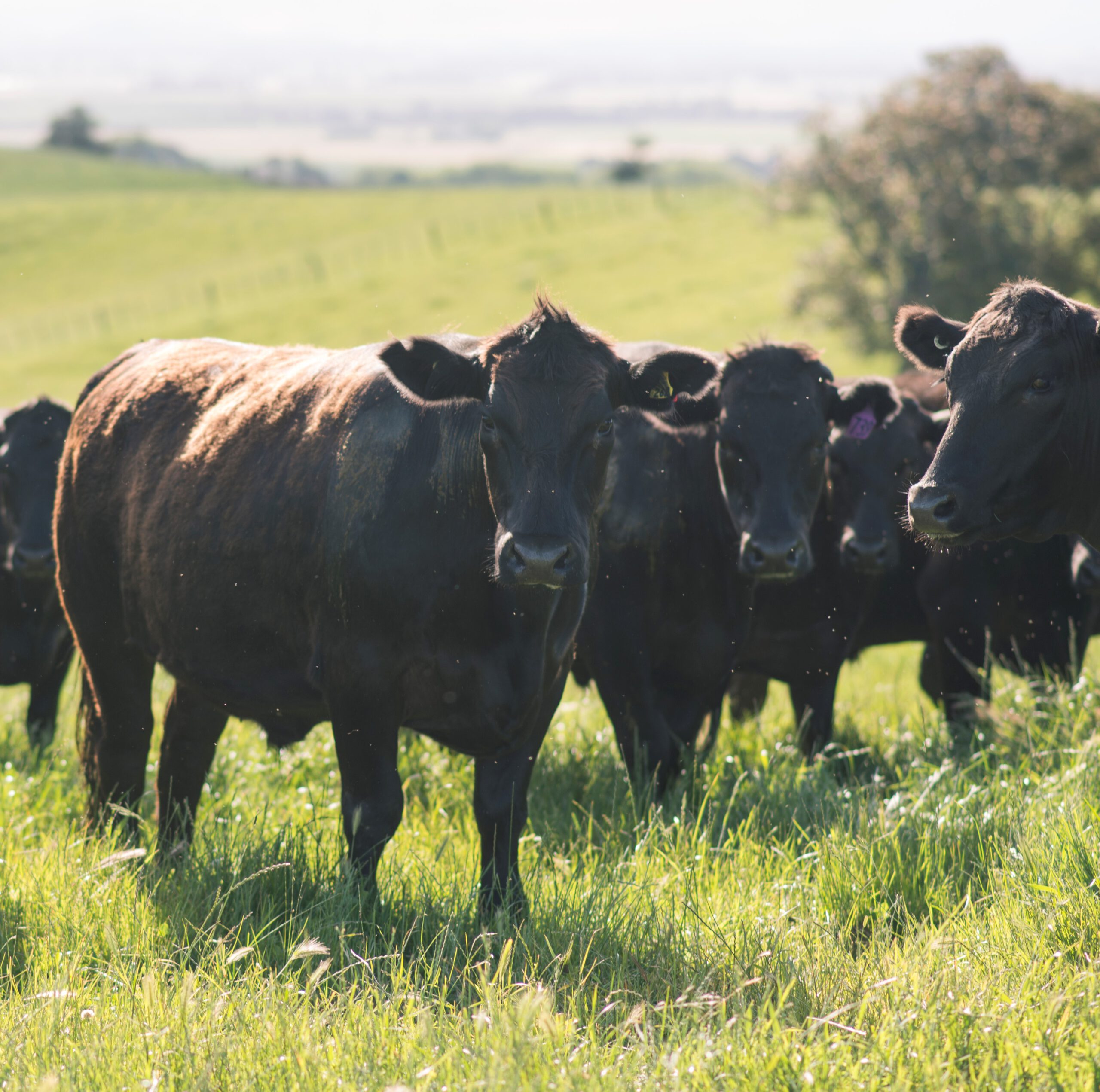Many studies have shown that the way cattle are fed and raised can have a large impact on the nutrient composition of their beef. Grass-fed compared with grain-fed beef may contain less fat, but a lot more omega-3 fatty acids and CLAs (conjugated linoleic acids).
In New Zealand grass-fed is about far more than the health benefits. It reflects pasture-farming at its true potential – a sustainable approach which is better for the environment, supporting future generations of farmers, and ultimately consumers. The temperate climate and extensive open landscape in New Zealand makes it one of the few places in the world where this is a reality.
In the United States beef is mass-produced and commonly grain-fed. While the animals start life roaming free and eating grass, most are conventionally raised in large feedlots. These are called Concentrated Animal Feeding Operations (CAFOs). While there are varied feeding practices, cattle are generally kept in confined stalls and fed grain-based feeds most often based on soy or corn, with restricted dried grass as a supplement.
In contrast New Zealand cattle are raised free to roam 365 days a year. This means from birth to harvest, our beef is grass-fed and finished with a 95% pasture-based diet. Animal welfare is a high priority in New Zealand. This lifestyle and natural grass diet promotes positive animal welfare and healthy cattle requiring few, if any, antibiotics and no hormone growth promotants (HGPs). New Zealand is among the lowest global users of antibiotics in cattle. Antibiotics may only be used to treat medical conditions, must be administered by a veterinarian, and treated animals are withheld from the market for specified periods to ensure no residual antibiotics are within the meat. Our beef is from family farms rather than feedlots or factories, and they’re managed in sync with nature, supported by generations of wisdom and time-proven methods.
Good grass results from good soil. New Zealand farmers work with the land according to soil capabilities to nurture healthy soils. Efforts focus on improving soil condition, carbon content, and productivity. Most New Zealand cattle farmers operate what is believed to be one of the most sustainable methods of livestock production through rotational grazing. This is a regenerative system that supports maintaining soil health and restoring grasslands.
While livestock production impacts carbon emissions, New Zealand has one of the lowest impacts worldwide, at about half of global averages before carbon offsets. (REF: B+LNZ). Vegetation management is key in supporting climate change mitigation. Beef + Lamb New Zealand (B+LNZ) commissioned an independent review of the carbon sequestration on New Zealand sheep and beef farms. It found they are well on the way to being carbon neutral because of carbon being sequestered through native and woody vegetation. A 2018 satellite mapping programme discovered nearly 25% of New Zealand’s native vegetation and 17% of New Zealand’s native forest are on livestock farms. This vegetation is offsetting between 63% and 118% of on-farm agricultural emissions. It is also contributing to biodiversity, soil erosion control, and providing shelter for animals.
The New Zealand Difference at Taranaki Bio Extracts
As well as supporting the environment, grass-fed and pasture-raised systems improve the quality of life for our cattle, and ultimately deliver ingredients of higher value to the marketplace.
From grass-fed beef bone broth to beef bone extracts, our ingredients are popular across food, functional food, and wellbeing products. They support international brands as natural savoury flavourings, stocks, and culinary bases, through to ingredients in gravies, soups, marinades, broths, and bouillons.
We understand that leading brands achieve and hold their positions in the marketplace because they have the highest standards of quality. For us quality starts with the grass-fed approach – It’s the New Zealand Difference.
Ends.
